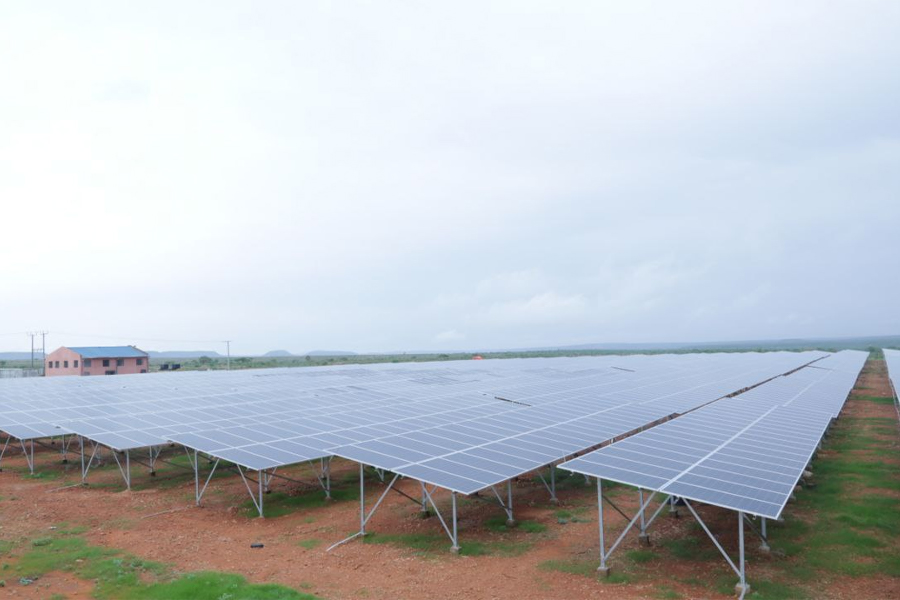
Featured | Jul 09,2022
I found myself savouring the first leisurely moments of my vacation. Sitting at John Graham’s corner in the Olympiakos Greek Club, the world slowed down for a while. With good dinner and a tangy crispness of cold Sprite infused with a slice of lemon, I began to enjoy the indulgent calm which is a rare respite from the relentless pace of daily life.
To my right, under the glow of floodlights, a few dedicated players enjoyed a lively tennis game on the red clay courts. The garden hosted couples and youthful laughter echoed from a soccer match and basketball court. All of this unfolded amidst the calming presence of towering trees and the soothing chirps of birds, a natural soundtrack accompanying the cool evening air.
It felt like an oasis, an enclave of peace in the heart of urban life.
The Club is a hub of history, art, and recreation, seamlessly blending the past with the present. Its spacious grounds and thoughtful amenities make it a rare gem in a city where recreational facilities are cramped and lack the charm or value to justify their cost. Beyond its serene gardens and courts, it regularly hosts bazaars selling a wide range of items, from herbal teas and handmade T-shirts to silver ornaments and exotic incense. It is a sanctuary for those seeking a quality escape from the chaos of urban life, a haven that many have yet to discover.
Another space that offers a similar sense of leisure, albeit in a more contemporary setting, is Laphto Mall near Bisrate Gabriel. It initially appears no different from others. Yet, stepping inside reveals several recreational opportunities. While it lacks the sprawling grounds of the Olympiakos Club, the mall compensates with its diverse amenities, creating a serene environment within the urban context.
Unfortunately, spaces like these are becoming increasingly scarce in Addis Abeba. The relentless march of urbanisation, coupled with skyrocketing real estate costs, has led to the loss of many cherished recreational areas. A poignant example is a former supermarket and juice bar in Ayat. Once surrounded by a lush garden and featuring amenities like a trampoline for kids, it was a peaceful retreat. I usually visited, enjoying fresh juice and casual conversations with the friendly owners. Over time, economic pressures forced them to transform the space into a cluster of shops and steakhouses, erasing its charm and tranquillity.
Another notable loss for me is the Ronali International Hotel. With its glass facades, marble interiors, and luxurious amenities, it was a landmark at Ayat Square. I have fond memories of enjoying its ambience with my son.
Sadly, the hotel did not survive the economic fallout of the COVID-19 pandemic and was eventually repurposed into a hospital. While its new purpose undoubtedly serves the community, its transformation marked the loss of a space that had provided countless moments of joy and relaxation. Such changes are emblematic of a broader trend, where recreational facilities are sacrificed in favor of more profitable ventures.
This trend is not unique to Addis Abeba. Globally, cities face the difficulties of balancing urban development with preserving green and recreational spaces. Hong Kong, for instance, is renowned for its dense skyline, boasting 558 skyscrapers over 150m tall. Yet, it has managed to allocate 40pc of its land to country parks and protected areas. These green spaces support a rich biodiversity and offer residents a respite from the city’s frenetic pace. Kowloon Park, for example, provides a tranquil escape, with its aviary, bird lake, and shaded paths offering a stark contrast to the surrounding concrete jungle.
Addis Abeba can draw inspiration from such examples. Recent efforts by the government to develop green spaces are commendable. The initiatives signal a recognition of the importance of ecological sustainability in urban planning. However, older parks like Bihere Tsige and Hamle 19 remain neglected, their infrastructure unchanged for decades. Renovating these spaces would preserve their historical significance and enhance their potential as recreational hubs.
Developers also should be encouraged—or even required—to include green areas in their projects. While this may not align with short-term economic interests, it would substantially improve the city’s livability. Green spaces provide more than aesthetic value; they offer a reprieve from the stresses of urban life, contributing to physical and mental well-being.
With rapid transformation, the need for a balanced approach to development becomes equally urgent. Roads and skyscrapers are undoubtedly vital for economic growth, but so too are parks, gardens, and other natural spaces. These elements are not luxuries but essential to creating a city where people can thrive.
For me, the appeal of places lies in their ability to offer a sense of connection—to nature, to community, and to oneself. They remind us that amidst the noise and chaos of modern life, there are still pockets of peace to be found. It is up to us to cherish and protect these spaces, ensuring they remain for future generations.
Whether we acknowledge it or not, we are deeply connected to the natural world. As cities grow and evolve, marked with the grey hue on the main roads of Addis Abeba, we must find ways to preserve this connection. In the words of Bob Marley, the “concrete jungle” can oppress, but it can also inspire if we make room for nature to thrive alongside us.
As cities grow, we must remember what makes them livable. Roads and skyscrapers are important, yes. But peaceful corners are what breathe life into a city. They are where we find serenity, connect with loved ones, and escape the noise of daily life.
The soul of a city is not found in its tallest buildings but in its greenest spaces. These are the places that remind us to slow down, breathe, and remember that we belong to something larger than the hustle of urban life. As Addis Abeba continues to transform, we should ensure that its green spaces grow alongside it—because a city without places to pause and reflect is no city at all.
I appreciate the efforts being made by the government to create green areas. The preservation of public parks like the one at Menelik II Avenue, the Ghion Hotel and newly built ones like Unity, Friendship and Entoto parks are highly commendable to revitalise Addis to an urban centre where economic activities go hand-in-hand with recreational and leisure needs.
PUBLISHED ON
Nov 23,2024 [ VOL
25 , NO
1282]


Featured | Jul 09,2022

Fortune News | Aug 11,2024

Radar | Jan 19,2024

Commentaries | Aug 25,2024

News Analysis | Apr 13,2024

Radar | Nov 16,2024

Radar | Nov 24,2024

Obituary | Apr 03,2023

My Opinion | Jun 14,2025

Fortune News | Dec 21,2022

Dec 22 , 2024 . By TIZITA SHEWAFERAW
Charged with transforming colossal state-owned enterprises into modern and competitiv...

Aug 18 , 2024 . By AKSAH ITALO
Although predictable Yonas Zerihun's job in the ride-hailing service is not immune to...

Jul 28 , 2024 . By TIZITA SHEWAFERAW
Unhabitual, perhaps too many, Samuel Gebreyohannes, 38, used to occasionally enjoy a couple of beers at breakfast. However, he recently swit...

Jul 13 , 2024 . By AKSAH ITALO
Investors who rely on tractors, trucks, and field vehicles for commuting, transporting commodities, and f...

Jun 28 , 2025
Meseret Damtie, the assertive auditor general, has never been shy about naming names...

Jun 21 , 2025
A well-worn adage says, “Budget is not destiny, but it is direction.” Examining t...

Jun 14 , 2025
Yet again, the Horn of Africa is bracing for trouble. A region already frayed by wars...

Jun 7 , 2025
Few promises shine brighter in Addis Abeba than the pledge of a roof for every family...